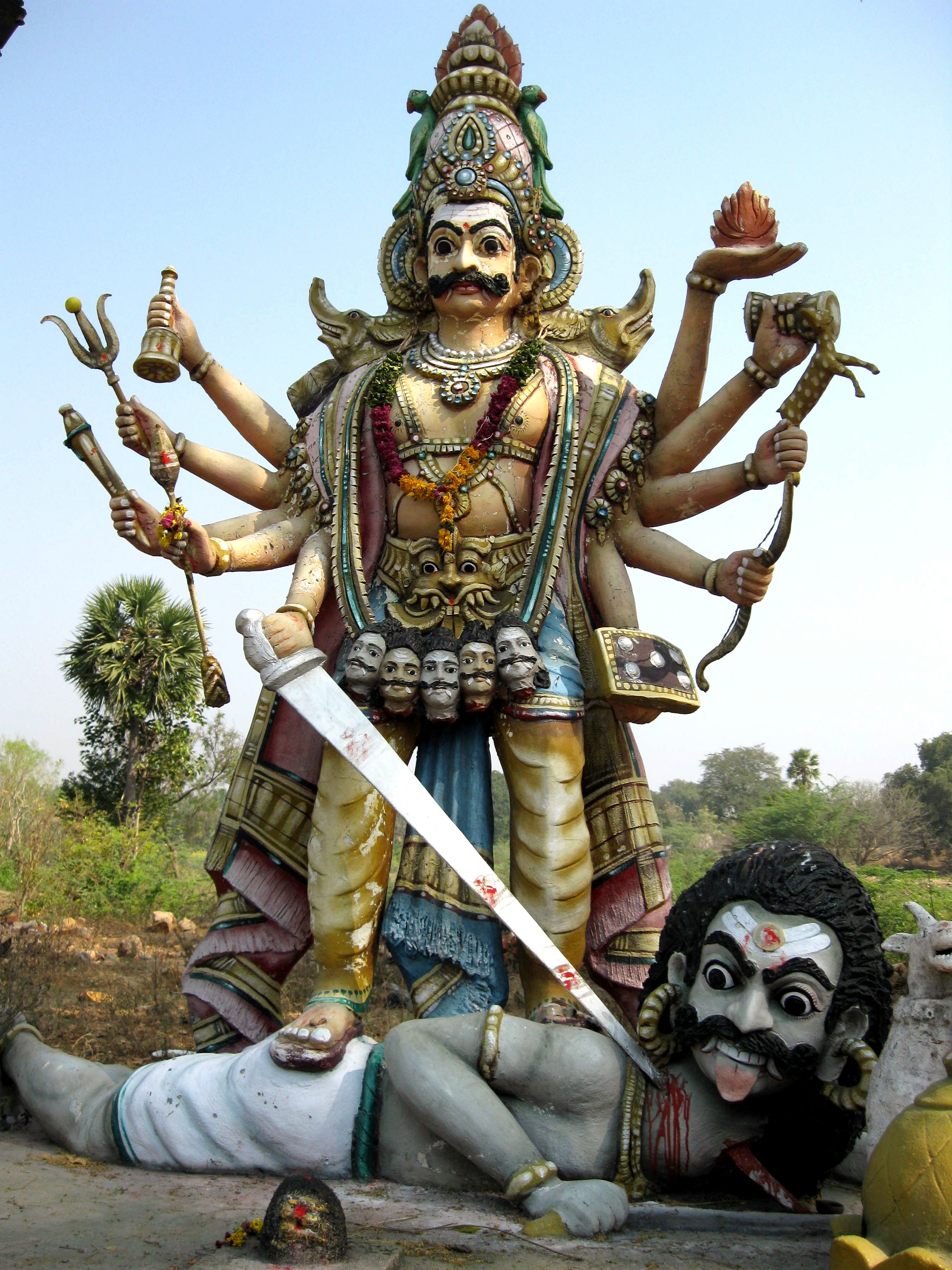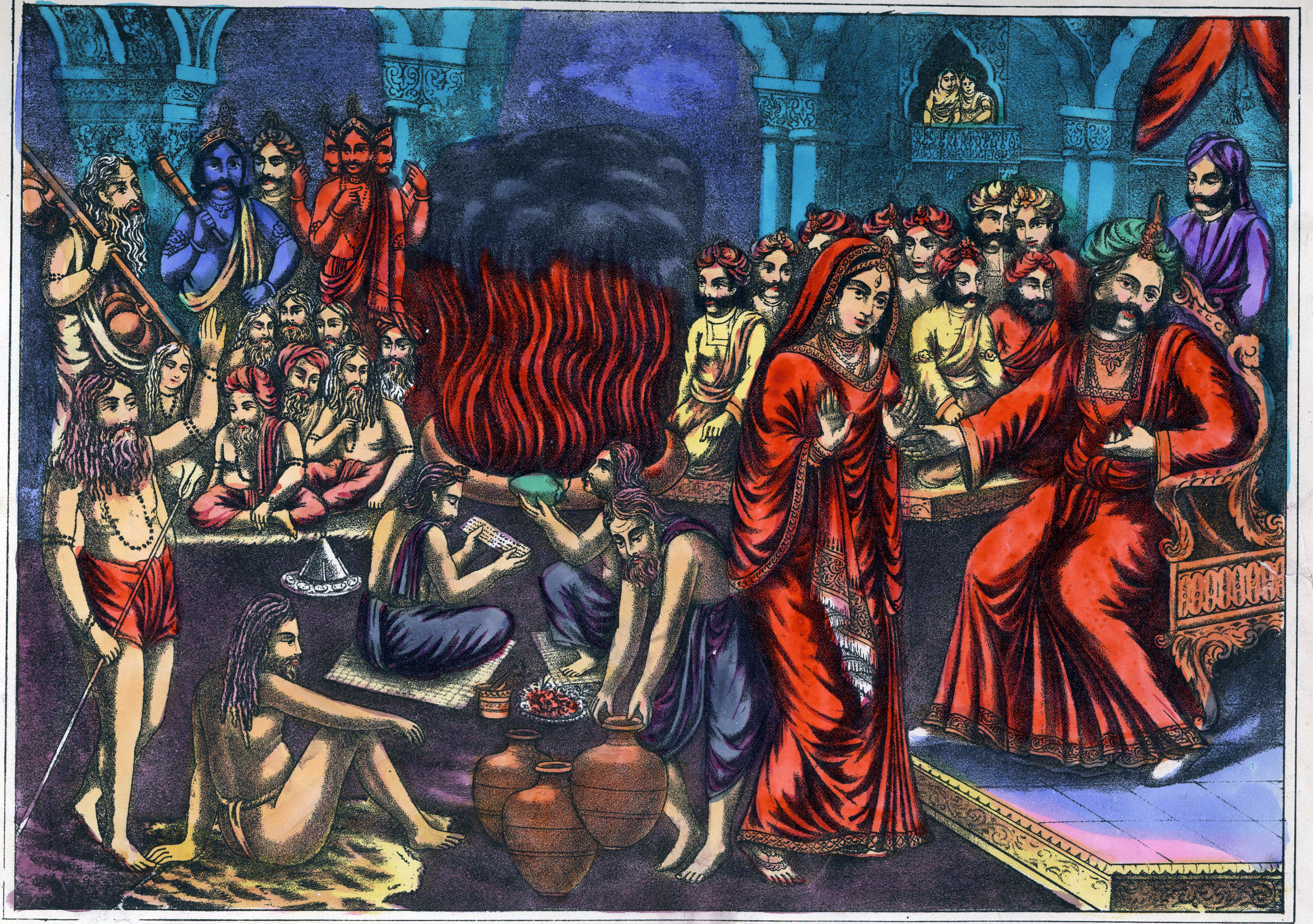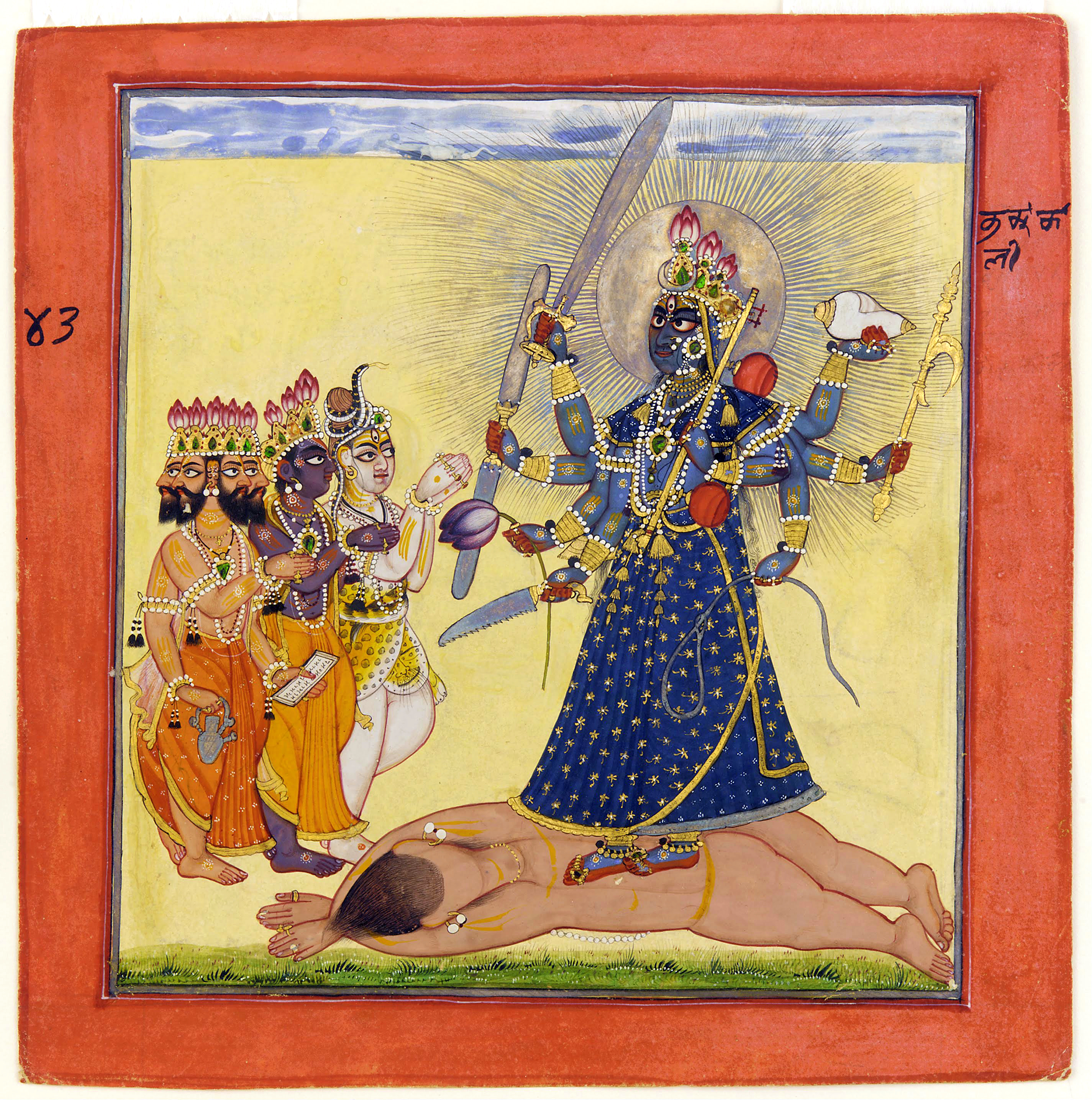|
Virabhadra
Virabhadra (), also rendered Veerabhadra, Veerabathira, and Veerabathiran, is a fierce form of the Hindu god Shiva. He is created by the wrath of Shiva, when the deity hurls a lock of his matted hair upon the ground, upon hearing of the self-immolation of his consort, Sati, at the Daksha yajna.the Horse-sacrifice of the Prajapati Daksha translated by Kisari Mohan Ganguli (1883–1896), Book 12: Santi Parva: Mokshadharma Parva: Section CCLXXXIV. p. 315 Mahadeva created from his mouth a terrible Being whose very sight could make one's hair stand on its end. The blazing flames ... [...More Info...] [...Related Items...] OR: [Wikipedia] [Google] [Baidu] |
Virabhadra Silver Plaque
Virabhadra (), also rendered Veerabhadra, Veerabathira, and Veerabathiran, is a fierce form of the Hindu god Shiva. He is created by the wrath of Shiva, when the deity hurls a lock of his matted hair upon the ground, upon hearing of the self-immolation of his consort, Sati, at the Daksha yajna.the Horse-sacrifice of the Prajapati Daksha translated by (1883–1896), Book 12: Santi Parva: Mokshadharma Parva: Section CCLXXXIV. p. 315 Mahadeva created from his mouth a terrible Being whose very sight could make one's hair stan ... [...More Info...] [...Related Items...] OR: [Wikipedia] [Google] [Baidu] |
Daksha Yajna
Dakṣayajña is an important event in Hindu mythology that is narrated in various Hindu scriptures. It refers to a yajna (ritual-sacrifice) organised by Daksha, where his daughter, Sati, immolates herself. The wrath of the god Shiva, Sati's husband, thereafter destroys the sacrificial ceremony. The tale is also called Daksha-Yajna-Nasha ("destruction of Daksha's sacrifice). The legend forms the liturgical basis of the establishment of the Shakti Pithas, the temples of Mahadevi, the supreme deity of Shaktism. It is also becomes a prelude to the legend of Parvati, Sati's reincarnation, who later marries Shiva. The tale is mainly told in the ''Vayu Purana''. It is also mentioned in the ''Kasi Kanda'' of the ''Skanda Purana'', the '' Kurma Purana'', '' Harivamsa Purana,'' and the ''Padma Purana''. The ''Linga Purana'', ''Shiva Purana'', and '' Matsya Purana'' also detail the incident. Variations of the legend may be observed in later Puranas, each text lending a superior account ... [...More Info...] [...Related Items...] OR: [Wikipedia] [Google] [Baidu] |
Daksha
In Hinduism, Daksha (Sanskrit: दक्ष, IAST: , lit. "able, dexterous, or honest one") is one of the '' Prajapati'', the agents of creation, as well as a divine king-rishi. His iconography depicts him as a man with a stocky body and a handsome face or the head of a goat. In the ''Rigveda'', Daksha is an '' Aditya'' and is associated with priestly skills. In the epics and ''Puranic'' scriptures, he is a ''son'' of the creator god Brahma and the father of many children, who became the progenitors of various creatures. According to one legend, an egoistic Daksha conducted a yajna (fire sacrifice) and didn't invite his youngest daughter Sati and her husband Shiva. He was beheaded by Virabhadra for insulting Sati and Shiva but was later resurrected with the head of a goat. Many ''Puranas'' state that Daksha was reborn to Prachetas in another ''Manvantara'' (age). Etymology and textual history The meaning of the word "Daksha" (दक्ष) is "able", "expert", "skillful" ... [...More Info...] [...Related Items...] OR: [Wikipedia] [Google] [Baidu] |
Bhadrakali
Bhadrakali (IAST: Bhadrakālī; ), also known as Mahakali and Kali, is a Hindu goddess. According to Shaktism, she is one of the fierce forms of the Supreme Goddess Shakti, or Adi Parashakti, mentioned in the Devi Mahatmyam. In Vaishnavism, Bhadrakali is among the many epithets of Yogamaya, the internal potency of illusion of the preserver deity, Vishnu. According to several Puranas, Bhadrakali is a form of the goddess Parvati. She is worshipped in Kerala as Bhagavati, Mahakali, Chamunda, Sree Kurumba, and Kariam Kali Murti. She is purported to be the auspicious and fortunate form of Mahakali who protects the good, known as Bhadra. Etymology In Sanskrit, ''Bhadra'' means ''auspicious.'' Another interpretation of this name is that ''Bhadra'' comes from 'Bha' and 'dra', The letter 'Bha' means 'delusion' or 'Maya'and 'dra' is used as a superlative i.e. meaning 'the most/the greatest etc.' which makes the meaning of Bhadra as ''Maha Maya''. In other words, maya represents ... [...More Info...] [...Related Items...] OR: [Wikipedia] [Google] [Baidu] |
Sati (goddess)
Sati (, sa, सती, , ), also known as Dakshayani (Sanskrit: दाक्षायणी, IAST: ''Dākṣāyaṇī'', lit. 'daughter of Daksha'), is the Hindu goddess of marital felicity and longevity, and is worshipped as an aspect of the mother goddess Shakti. She is generally considered the first wife of Shiva, the other being Parvati, who was Sati's reincarnation after her death. The earliest mentions of Sati are found in the time of the Ramayana and the Mahabharata, but details of her story appear in the Puranas. Legends describe Sati as the favourite child of Daksha, who marries Shiva against her father's wishes. After Daksha humiliates her and her husband, Sati kills herself in the yajna (Fire-Sacrifice) to protest against him, and uphold the honour of her husband. In Hinduism, both Sati and Parvati, successively play the role of bringing Shiva away from ascetic isolation into creative participation with the world. Sati's story plays an important part in shaping th ... [...More Info...] [...Related Items...] OR: [Wikipedia] [Google] [Baidu] |
Shiva
Shiva (; sa, शिव, lit=The Auspicious One, Śiva ), also known as Mahadeva (; ɐɦaːd̪eːʋɐ, or Hara, is one of the principal deities of Hinduism. He is the Supreme Being in Shaivism, one of the major traditions within Hinduism. Shiva is known as "The Destroyer" within the Trimurti, the Hindu trinity which also includes Brahma and Vishnu. In the Shaivite tradition, Shiva is the Supreme Lord who creates, protects and transforms the universe. In the goddess-oriented Shakta tradition, the Supreme Goddess (Devi) is regarded as the energy and creative power (Shakti) and the equal complementary partner of Shiva. Shiva is one of the five equivalent deities in Panchayatana puja of the Smarta tradition of Hinduism. Shiva has many aspects, benevolent as well as fearsome. In benevolent aspects, he is depicted as an omniscient Yogi who lives an ascetic life on Mount Kailash as well as a householder with his wife Parvati and his three children, Ganesha, Kartikeya and ... [...More Info...] [...Related Items...] OR: [Wikipedia] [Google] [Baidu] |
Pushan
Pushan ( sa, पूषन्, Pūṣan) is a Hindu Vedic solar deity and one of the Adityas. He is the god of meeting. Pushan is responsible for marriages, journeys, roads, and the feeding of cattle. He was a psychopomp (soul guide), conducting souls to the other world. He protected travelers from bandits and wild beasts, and protected men from being exploited by other men. He was a supportive guide, a "good" god, leading his adherents towards rich pastures and wealth. Etymology Traditionally, the name of the deity is said to be derived from Sanskrit verb, ''pūṣyati'', which means "to cause to thrive". Many modern scholars consider Pushan to be derived from the reconstructed Proto-Indo-European god ''*Péh₂usōn'', which would thereby make Pushan a cognate of the Greek god Pan. The connection between Pan and Pushan was first proposed by the German scholar Hermann Collitz in 1924. Texts Ten hymns in the Rigveda are dedicated to Pūṣan (including one jointly to Soma ... [...More Info...] [...Related Items...] OR: [Wikipedia] [Google] [Baidu] |
Sister Nivedita
Sister Nivedita ( born Margaret Elizabeth Noble; 28 October 1867 – 13 October 1911) was an Irish teacher, author, social activist, school founder and disciple of Swami Vivekananda. She spent her childhood and early youth in Ireland. She was engaged to marry a Welsh youth, but he died soon after their engagement. Sister Nivedita met Swami Vivekananda in 1895 in London and travelled to Calcutta (present-day Kolkata), India in 1898. Swami Vivekananda gave her the name ''Nivedita'' (meaning "Dedicated to God") when he initiated her into the vow of '' Brahmacharya'' on 25 March 1898. In November 1898, she opened a girls' school in the Bagbazar area of North Calcutta. She wanted to educate girls who were deprived of even basic education. During the plague epidemic in Calcutta in 1899, Nivedita nursed and took care of the poor patients. Nivedita had close associations with the newly established Ramakrishna Mission. Because of her active contribution in the field of Indian Nati ... [...More Info...] [...Related Items...] OR: [Wikipedia] [Google] [Baidu] |
Agni
Agni (English: , sa, अग्नि, translit=Agni) is a Sanskrit word meaning fire and connotes the Vedic fire deity of Hinduism. He is also the guardian deity of the southeast direction and is typically found in southeast corners of Hindu temples. In the classical cosmology of the Indian religions, Agni as fire is one of the five inert impermanent elements ('' pañcabhūtá'') along with space (''ākāśa''), water (''ap''), air (''vāyu'') and earth (''pṛthvī''), the five combining to form the empirically perceived material existence (''Prakṛti''). In Vedic literature, Agni is a major and oft-invoked god along with Indra and Soma. Agni is considered the mouth of the gods and goddesses and the medium that conveys offerings to them in a '' homa'' (votive ritual). He is conceptualized in ancient Hindu texts to exist at three levels, on earth as fire, in the atmosphere as lightning, and in the sky as the sun. This triple presence accords him as the messenger between t ... [...More Info...] [...Related Items...] OR: [Wikipedia] [Google] [Baidu] |
Swayamvara
Svayamvara ( sa, स्वयंवर, svayaṃvara, translit-std=IAST), in ancient India, was a method of marriage in which a woman chose a man as her husband from a group of suitors. In this context, in Sanskrit means 'self' and means 'groom'. The bride wishing to marry would select an auspicious time and venue and then broadcast her intentions. Kings typically sent messengers to outside lands, while commoners simply spread the news within the local community. On the appointed day, suitors would gather at the venue and declare their qualifications. The bride would place a garland on the man of her choice and a marriage ceremony was held immediately. Indian literature Sīta In the Hindu epic ''Ramayana'', King Janaka proclaimed that Sita would be wed to the man who could lift and string the Shiva Dhanush (Shiva's bow), calling this feat , meaning the cost to be paid by a suitor. Sita married Rama, the only man strong enough to lift and string the bow. Kunti King Kuntibh ... [...More Info...] [...Related Items...] OR: [Wikipedia] [Google] [Baidu] |
Shaivism
Shaivism (; sa, शैवसम्प्रदायः, Śaivasampradāyaḥ) is one of the major Hindu traditions, which worships Shiva as the Supreme Being. One of the largest Hindu denominations, it incorporates many sub-traditions ranging from devotional dualistic theism such as Shaiva Siddhanta to yoga-orientated monistic non-theism such as Kashmiri Shaivism.Ganesh Tagare (2002), The Pratyabhijñā Philosophy, Motilal Banarsidass, , pages 16–19 It considers both the Vedas and the Agama texts as important sources of theology.Mariasusai Dhavamony (1999), Hindu Spirituality, Gregorian University and Biblical Press, , pages 31–34 with footnotesMark Dyczkowski (1989), The Canon of the Śaivāgama, Motilal Banarsidass, , pages 43–44 Shaivism developed as an amalgam of pre-Vedic religions and traditions derived from the southern Tamil Shaiva Siddhanta traditions and philosophies, which were assimilated in the non-Vedic Shiva-tradition. In the process of Sanskritisa ... [...More Info...] [...Related Items...] OR: [Wikipedia] [Google] [Baidu] |








_Hindu_puja%2C_yajna%2C_yagna%2C_Havanam_in_progress.jpg)

